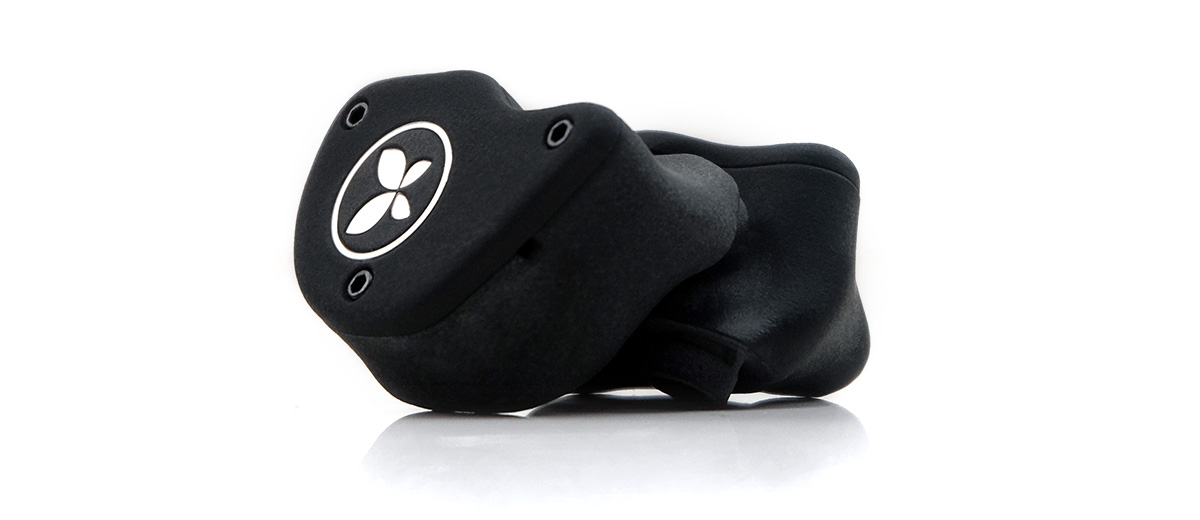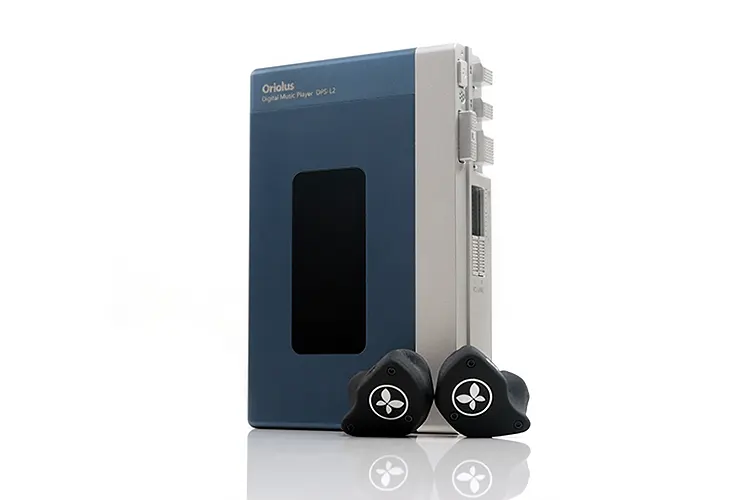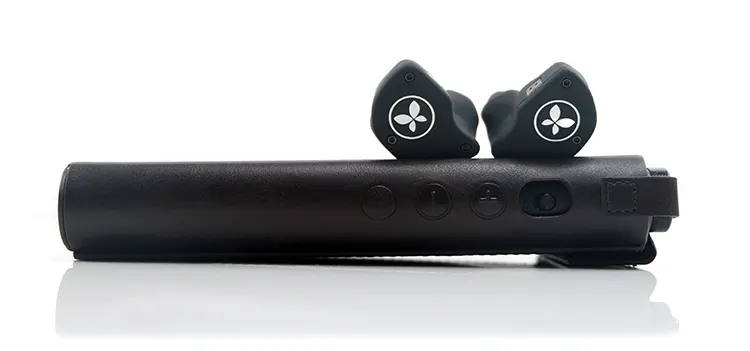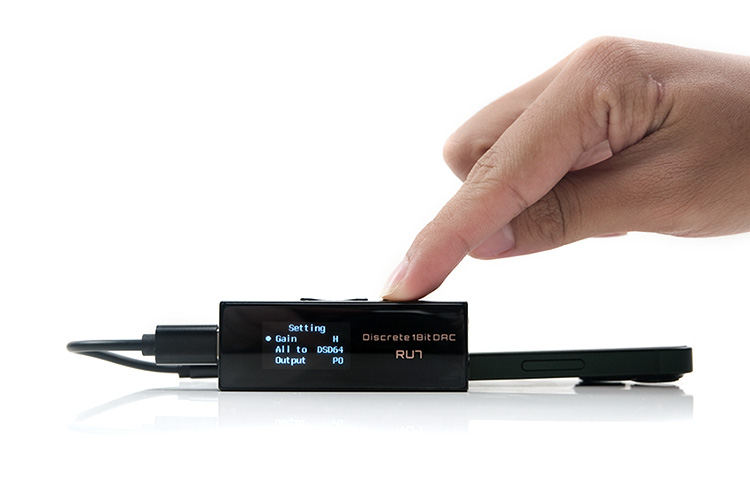Sound Impressions
The following sound impressions were created with the Chord Electronics Mojo 2 and the Cayin N7 as my main sources with the X4 equipped with the stock cable in balanced 4.4mm pentaconn format.
Summary
If you are coming from the mid-to-highs focused X2 then the X4 is a world of difference in terms of technical capability and coloration. So much so, that these should complement each other rather than compete because of their contrasting focus and balance.
The X4 is a smoother bottom-weighted sound signature with richer texture, a liquid leading edge to its notes, and gloriously full-sounding vocal performances.
I would say right away though the vocal is not in your face or as forward as something like the FIBAE 5. There is a degree of comparative relaxation but I think that aids with a perception of improved space and width in the X4 mids.
Despite switching to a dynamic driver for the lows the X4 is not too heavy on the sub-bass bias. Nothing quite as tilted as something like the UM MEXT’s elevated curve sub-50Hz but rather it has a broad and forward punchy tone with lots of enjoyable body.
This tuning reminds me of a loose interpretation of the old Audeze house sound pre-Fazor with a nice balance on the bass weight exemplified by some very solid bass guitar strums that give some extra zip in terms of rhythm and timing.
Overall, the X4 is less of a critical referencing experience and more built for relaxed and enjoyable listening. It’s generally tilted to the juicy and warm side making it a fairly easy monitor to pair with a wide variety of sources.
Frequency Response
My perception of the X4 is one that of a frequency response with a firm low-end. I must qualify that by saying that the sub-bass is marginally diminished but not rolled off. There is a bit of attenuation below 50Hz with an amplified bias more to the 50-100hz region from this dynamic driver.
From 100-300hz I would say the X4 hits above the Harman Target curve which means the punch and snap from the X4 is actually the dominant bass characteristic but there is also a degree of warmth traveling up into the upper-bass and just touching the lower-mids a little.
From 1-5k the X4 is relatively neutral in imaging and gain with maybe just a slight push around 1k but below that there is a little bit of a dip around 600-800Hz.
You can pick up a bit on chest voice rock vocals that sit a bit closer to backing instruments and do not have quite the same presence as mixed and head voice alternatives that reach a bit higher around 1-2k exploding with welcome presence.
The upper treble around 8-10k has a subtle elevation. Less so in the lower treble so you won’t hear anything overtly sharp or clashing in the mids coloration.
Timbre
The X4 is generally a voluptuous warm and smooth instrumental and vocal timbre underpinned by an excellent fundamental and sliver of upper treble overtones to prevent the sound from being overly rounded in its delivery.
Some fundamentals go for sheer bass weight giving you a relatively deeper more powerful sound but in doing so they can often end up flattening the mid-bass through to the mids to keep the bloom from being overpowering. So, when the sub-bass is not on song the general tone can sound relatively flat.
The X4 pitches a little differently by coloring the mid-bass and just a shade below emphasizing pace and punch but carrying with it some excellent body which I honestly find quite addictive with modern pop and EDM.
The midrange timbre runs the same a similar theme with bold rich textured vocals and backing instruments such as Spanish guitar lower chord string plucks, or piano strikes offering a slightly soft and richer tone.
Higher-pitching notes are not overly rounded with just a light sprinkle of treble sparkle to give percussion a bit of a lift.
Staging & Dynamics
The dynamics and staging width from the X4 performance are strong points. It also has an excellent bass balance that really gives some excellent punch.
It is not the deepest sounding of the compared monitors I had for this review but it does so much better than the other 3 in terms of fleshing out a great rhythm from its dynamic driver.
I have to pay attention also to the staging width, especially when paired with sources like the Mojo 2 and the Cayin N7 which are known to allow monitors to run free so to speak in terms of staging complexity.
With the N7, the X4 demonstrated some excellent width and space through the mids. The Mojo 2 merely converted that into something a bit tighter and more holographic sounding.
To some extent, the X4 can’t quite compete with the excellent headroom the X2 magically delivers or some of the pristine clarity offered by the likes of the FIBAE 5. However, the X2 is very flat on the lows in comparison so it lacks the power and balance of the X4 and it also feels more immersive compared to the FIBAE 5 ‘stand-offish’ bass dynamics.
Vocal positioning on the X4 to me is more peek-a-boo depending on the register. For guttural lower-pitching chest voices that sit on the lower-mids, they can sometimes feel slightly diminished in deference to the pounding mid-bass energy.
However, for higher-register vocals, the overall vocal positioning here is neutral to just slightly forward but not overly intimate, shouty, or dominant. That means some excellent presence without fatigue.
Synergy
Efficiency
The Bellos Audio X4 is rated at 16Ω impedance with an SPL of 116 dB/mW. It is actually just a little bit less sensitive than the X2 which is rated at 41Ω impedance with an SPL of 114 dB/mW, despite packing in more drivers including a dynamic driver.
In comparison to our other tested competing monitors, the X4 is also more sensitive than the FIBAE 5 which is rated at 10Ω and 109dB @1kHz SPL, and the UM MEXT which is rated at 6Ω impedance and 108dB @1kHz 1Vrms.
In both instances when AB’ing them against the X4 using the Cayin N7 or the FiiO M15s, I did need to push up the volume to match them, at least for a subjective loudness test.
All DAPs and dongles tested drove the X4 easily enough though for dongles I would advise going to a high gain mode. It is not a super sensitive IEM and I do tend to find high gain in dongles more useable, especially if you are using an SE cable with the X4.
You should be presented with no background hiss or noise floor issues with the X4 using most modern DAPs and dongles.
DAP Pairings
Tested DAPs included the Cayin N7, the FiiO M15s, and the HiBy RS6. The Mojo 2 was a 4th portable source because it has been in heavy rotation for my personal use recently.
The X4’s smooth sound signature makes it a very flexible monitor for DAP pairings. In truth, I never once heard the sound signature come undone in terms of imbalance, too much sibilance, or a shallow bass performance.
With the M15s the sound will be a shade darker sounding compared to the other sources I tested. Here I might advise turning off its second harmonic regulation filter which can smooth higher-pitching percussion and some vocal leading edges which I think is not necessary here.
R2R-based DAPs such as the N7 and the RS6 did much better with the RS6 sounding very smooth but developed the sound stage in different ways.
The RS6 isn’t as expansive or as dynamic sounding with the X4 as the Cayin N7 and the M15s pairings. It has a nice warm underbelly but its focus is on delivering a big vocal presence which the X4 is very good at taking advantage of.
The N7 is more neutral on vocal imaging but it stretches out the X4’s staging width really nicely and gives a nice clear expansive background. It was with this DAP that I was able to pick up just how well the X4 dealt with space in the mids compared to the FIBAE 5, for example.
The Mojo 2 gets my vote as the best pairing. You have plenty of headroom, the best dynamic range on the lows, and the most holographic presentation of the pairings.
Dongle Pairings
What I was looking for the most with a dongle X4 pairing was how much dynamic range and detail I could find in each performance without it sounding forced with enhanced treble presence.
Of the four I tested the most natural-sounding two were the HiBy FC6 and the Cayin RU7. The others included the Luxury & Precision W2 and the Questyle M15 which I considered to be more neutral in tone but the punchiest choices for the X4.
The FC6 produces what I term the fleshiest-sounding vocal timbre and the weightiest bass delivery which will suit those who are buying the X4 for its vocal and mid-bass punch.
It’s a slightly slower sound than the RU7 and is not as expensive in terms of staging width or height but it does really well with vocal texture and presence..
The RU7 is the most balanced sounding of the four dongles tested. You get a nice analog tone throughout with the X4 with the widest stereo image and plenty of space for its more neutral vocal imaging to sound clear of background instruments. The X4 lows are not as rich as the FC6 pairing but they do sound dense and well formed.
Both the M15 and the W2 have a more digital sound but still, one that is quite clear and at times you might argue more refined for the mids and highs than the NOS mode on the FC6.
The X4 sounded really punchy with these two dongles but not as emotionally appealing for vocals. Just a little too refined for my tastes with the M15’s staging capability well behind the RU7.






